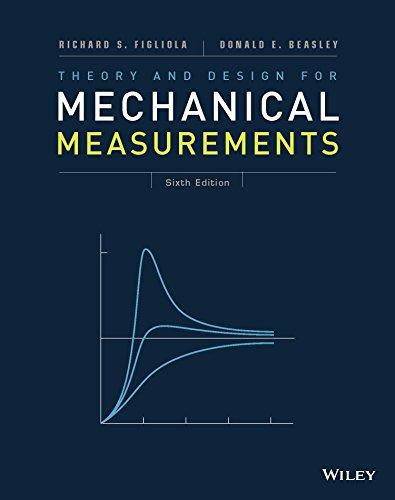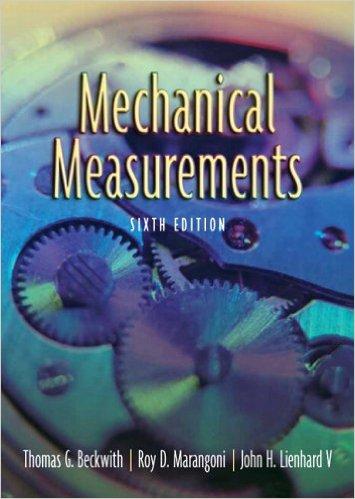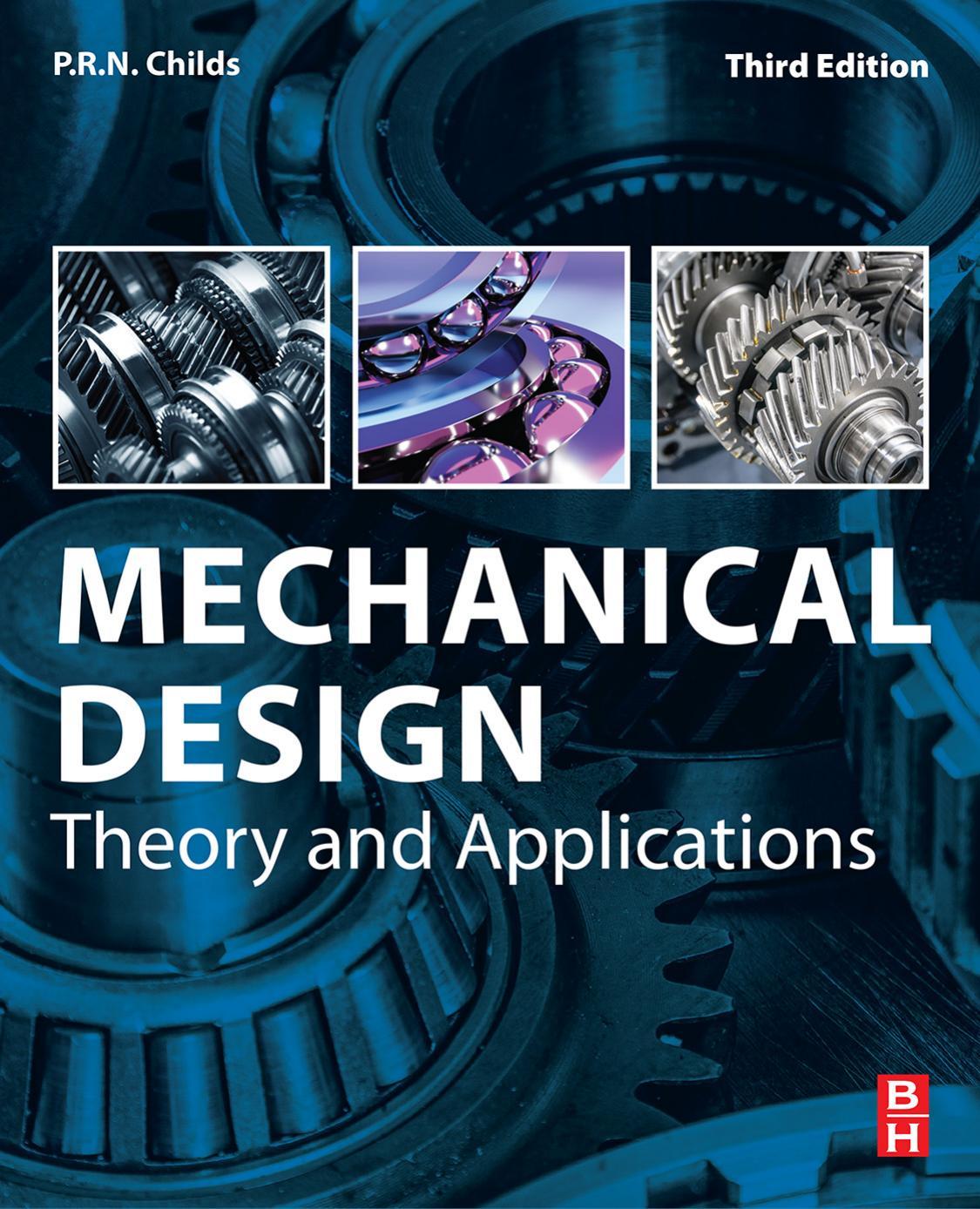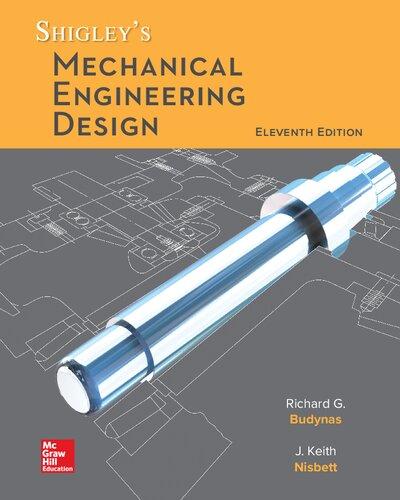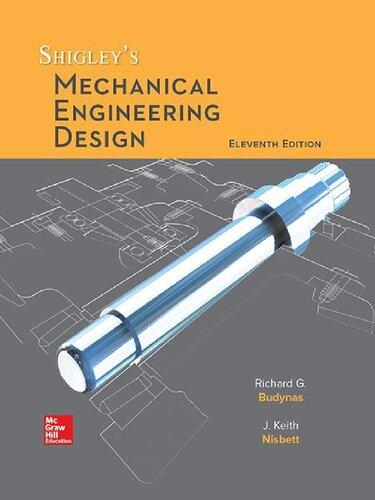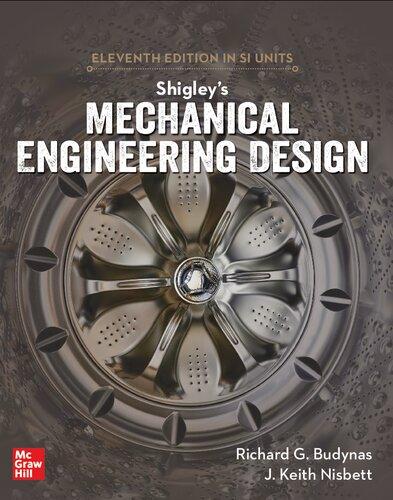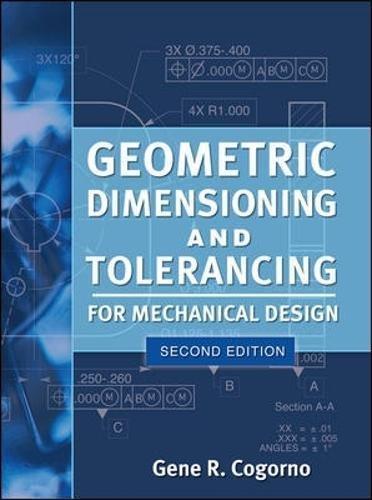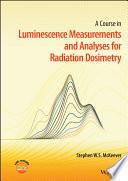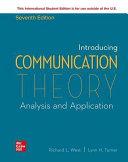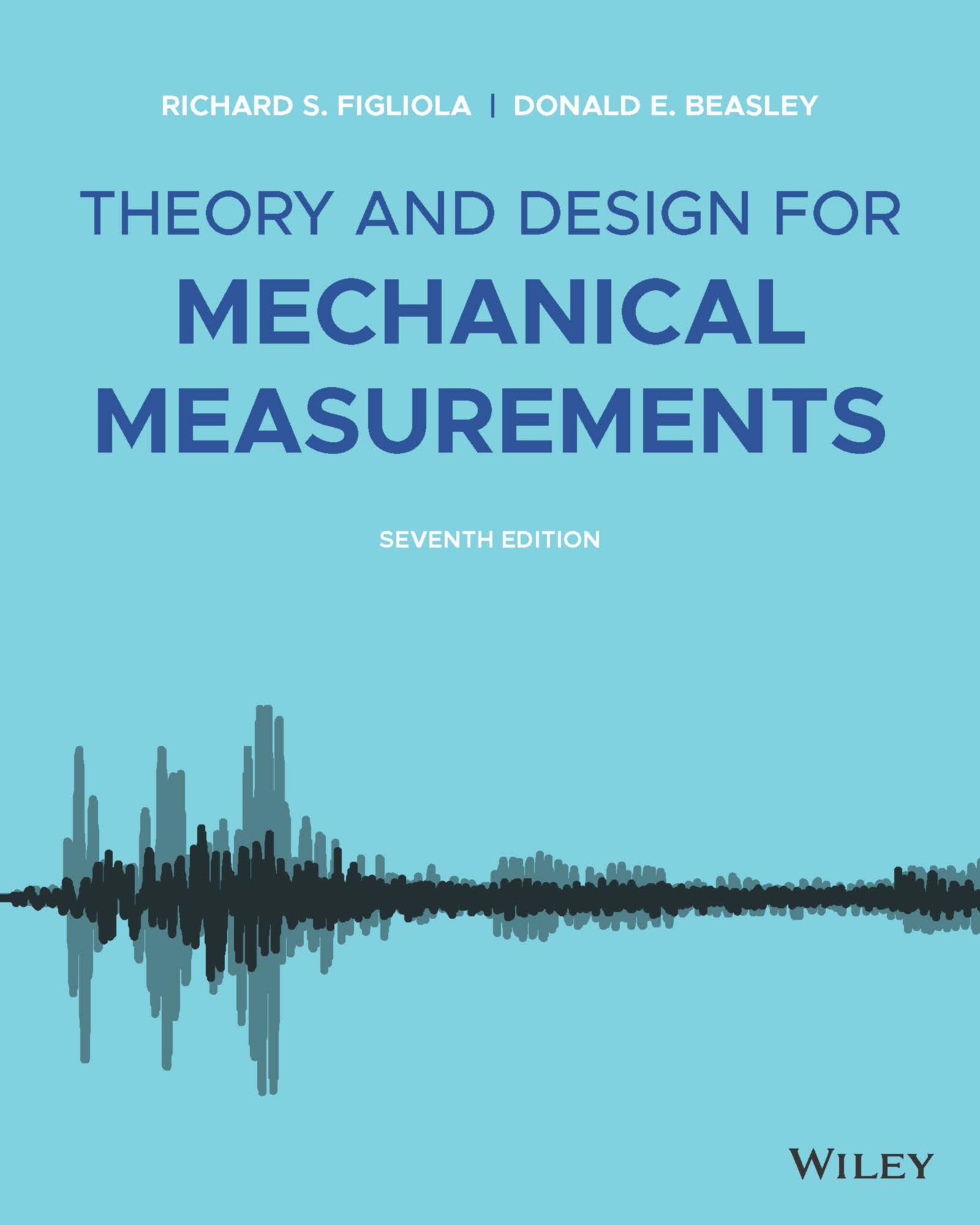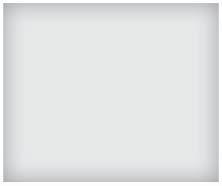PREFACE
Therevisededitionof TheoryandDesignforMechanicalMeasurements continuestoprovidea well-founded,fundamentalbackgroundinthetheoryandpracticeofengineeringmeasurements. Thiseditiontakesadvantageofweb-basedandinteractivetechnologytoimprovetheonlineand e-formataccesstomaterialsforimprovedpedagogywhileretainingarchivalmaterialinthepublishededition.Thisformatminimizesprintmaterialsinourefforttoreducetextcosts.
Aswitheachotheredition,wehaveintegratedthenecessaryelementstoconductengineering measurementsthroughthedesignofmeasurementsystemsandmeasurementtestplans,withan emphasisontheroleofstatisticsanduncertaintyanalysesinthatprocess.Thetextisappropriate forundergraduate-levelandgraduate-levelstudyinengineering.Thetextissuitablyadvancedand orientedtoserveasareferencesourceforprofessionalpractitioners.Ratherthanatopicalsource ofinformation,wehaveprovidedsufficientbackgroundmaterialtoenableintelligentselectionof instrumentsanddesignofmeasurementsystems.Thepedagogicalapproachinvitesindependent studyoruseinrelatedfieldsthatrequireanunderstandingofinstrumentationandmeasurements.
Theorganizationusedineacheditionofthistextdevelopsfromourviewthatcertainaspectsof measurementscanbegeneralized,suchastestplandesign,signalanalysisandreconstruction,and measurementsystemresponse.Topicssuchasstatisticsanduncertaintyanalysisrequireabasic developmentofprinciplesbutarethenbestillustratedbyintegratingthesetopicsthroughoutthe textmaterial.Otheraspectsarebettertreatedinthecontextofthemeasurementofaspecific physicalquantity,suchasstrainortemperature.
PedagogicalToolstoAidLearning
Wehaveretainedcertainsuccessfulelementsfromprioreditionsinthistextbook:
• Eachchapterbeginsbydefiningasetof learningoutcomes
• Thetextdevelopsan intuitiveunderstanding ofmeasurementconceptswithitsfocusontest systemmodeling,testplandesign,anduncertaintyanalysis.
• Eachchapterincludescarefullyconstructed exampleproblems thatillustratenewmaterialand problemsthatbuildonpriormaterial.Whereappropriatecasestudiesandvignettesillustrate currentapplicationsofmeasurementtheoryordesign.
• Exampleproblemsmakeuseofa KNOWN,FIND,SOLVE approachasanorganizationalaid towardsolution.Thismethodologyforproblemsolutionshelpsnewuserstolinkwordsand conceptswithsymbolsandequations.Manyproblemscontain COMMENTS thatexpandon thesolution,provideapropercontextforapplicationoftheprinciple,orofferdesignapplicationinsight.
• End-of-chapterpracticeproblems areincludedforeachchaptertoexercisenewconcepts.
• Practiceproblemsrangefromthosefocusedonconceptdevelopmenttobuildingof advancedskillstoopen-endeddesignapplications.Someproblemsrequireindependent researchforspecificapplicationsormeasurementtechniques.
• Withineachchapter,wehaveaddednewpracticeproblemsandremovedsomeoldproblems fromprioreditions.
• Weprovideonlineaccesstoasolutionsmanualforinstructorswhohaveadoptedthebook andregisteredwithWiley.Materialsarepostedonthetextbookwebsiteatwww.wiley.com/ go/figliola/Theory&designformechanicalmeasurements7e.
• Useofthesoftwareinproblemsolvingallowsin-depthexplorationofkeyconceptsthatwould beprohibitivelytimeconsumingotherwise.Thetextincludesonlineaccessto interactive software offocusedexamplesbasedonsoftwareusingNationalInstrumentsLabview® or Matlab®.TheLabviewprogramsareavailableasexecutablessothattheycanberundirectly withoutaLabviewlicense.ThesoftwareisavailableonboththeWileystudentandinstructor websites.
NewtoThisRevisedEdition
Withthisrevisededition,wehaveneworexpandedmaterialonanumberoftopics:
• Wehaveupdatedtheend-of-chapterpracticeproblemsbyremovingsomeolderproblemsand addingnewproblems.Wehavereplacedmorethan25%oftheproblemsinthetext.
• WehaveaddedadedicatedsetofStudentProblemswith“click-to-access”toviewsolutions. Theseareroughly25%oftheend-of-chapterproblems.Thiscapabilityisaccessibletoreaders whohavepurchasedthecapabilitythroughWiley.
• Giventhenewe-format,wehaveaddedsomedatafilesthatcanbeaccessedelectronicallyand usedinpracticeproblems.
• WehavesetasideadedicatedsetofInstructorProblemswithsolutionstoassistinlecturesor assessment.ThesearevisibleonlytoinstructorswhohaveregisteredwithWiley.
SuggestedCourseCoverage(fromSixthEdition)
Toaidincoursepreparation,Chapters1–5provideanintroductiontomeasurementtheorywith statisticsanduncertaintyanalysis,Chapters6and7provideabroadtreatmentofanalogand digitalsamplingmethods,andChapters8–12focusoninstrumentation.
Manyusersreporttousthattheyusedifferentcoursestructures—somanythatitmakesapreferredorderoftopicalpresentationdifficulttoanticipate.Toaccommodatethis,wehavewritten thetextinamannerthatallowsanyinstructortocustomizetheorderofmaterialpresentation. AlthoughthematerialofChapters4and5isintegratedthroughoutthetextandshouldbetaught insequence,theotherchapterscanstandontheirown.Thetextisflexibleandcanbeusedina varietyofcoursestructuresatboththeundergraduateandgraduatelevels.
Foracompletemeasurementscourse,werecommendthestudyofChapters1–7withuseof theremainingchaptersasappropriate.Foralabcoursesequence,werecommendusingchapters astheybestillustratethecourseexerciseswhilebuildingcompletecoverageovertheseverallab coursesnormallywithinacurriculum.Themannerofthetextallowsittobearesourcefora lab-onlycoursewithminimallecture.Overtheyearswehaveuseditinseveralforums,aswell asinprofessionaldevelopmentcourses,andwesimplyrearrangematerialandemphasistosuit ouraudienceandobjective.
Weexpressoursincerestappreciationtothestudents,teachers,andengineerswhohaveused ourearliereditions.Weareindebtedtothemanywhohavewrittenuswiththeirconstructivecommentsandencouragement.SpecialthankstoKathyHays-Stang,UniversityofTexas-Arlington, andToddSchweisinger,ClemsonUniversity,fortheirdetailedfeedbackandsuggestions.
RichardS.Figliola
DonaldE.Beasley
Clemson,SouthCarolina
1 BASIC CONCEPTSOF MEASUREMENT METHODS 1
1.1 Introduction,1
1.2 GeneralMeasurementSystem,2
SensorandTransducer,2
Signal-ConditioningStage,3
OutputStage,4
GeneralTemplateforaMeasurementSystem,4
1.3 ExperimentalTestPlan,5
Variables,6
NoiseandInterference,8
Randomization,9
ReplicationandRepetition,13
ConcomitantMethods,14
1.4 Calibration,14
StaticCalibration,14
DynamicCalibration,14
StaticSensitivity,15
RangeandSpan,15
Resolution,16
AccuracyandError,16
RandomandSystematicErrorsandUncertainty,16
SequentialTest,19
Hysteresis,19
RandomTest,19
LinearityError,19
SensitivityandZeroErrors,21
InstrumentRepeatability,21
Reproducibility,21
InstrumentPrecision,21
OverallInstrumentErrorandInstrumentUncertainty,22 VerificationandValidation,22
1.5 Standards,22
PrimaryUnitStandards,22
BaseDimensionsandTheirUnits,23
DerivedUnits,25
HierarchyofStandards,28
TestStandardsandCodes,29
1.6 PresentingData,30
RectangularCoordinateFormat,30
SemilogCoordinateFormat,30
Full-LogCoordinateFormat,30
SignificantDigits,30 Summary,33 Nomenclature,34 References,34
2 STATICAND DYNAMIC CHARACTERISTICSOF SIGNALS 35
2.1 Introduction,35
2.2 Input/OutputSignalConcepts,35 GeneralizedBehavior,36
ClassificationofWaveforms,36 SignalWaveforms,38
2.3 SignalAnalysis,39
SignalRoot-Mean-SquareValue,40
DiscreteTimeorDigitalSignals,40 DirectCurrentOffset,41
2.4 SignalAmplitudeandFrequency,42 PeriodicSignals,43 FrequencyAnalysis,45 FourierSeriesandCoefficients,48 FourierCoefficients,48
SpecialCase:Functionswith T = 2π,49 EvenandOddFunctions,49
2.5 FourierTransformandtheFrequencySpectrum,55 DiscreteFourierTransform,56 AnalysisofSignalsinFrequencySpace,60 Summary,62 References,63 SuggestedReading,63 Nomenclature,63
3 MEASUREMENT SYSTEM BEHAVIOR 64
3.1 Introduction,64
3.2 GeneralModelforaMeasurementSystem,64 DynamicMeasurements,65 MeasurementSystemModel,66
3.3 SpecialCasesoftheGeneralSystemModel,68 Zero-OrderSystems,68 First-OrderSystems,69 Second-OrderSystems,79
3.4 TransferFunctions,88
3.5 PhaseLinearity,90
3.6 Multiple-FunctionInputs,91
3.7 CoupledSystems,93
3.8 Summary,95 References,95 Nomenclature,96 Subscripts,96
4 PROBABILITYAND STATISTICS 97
4.1 Introduction,97
4.2 StatisticalMeasurementTheory,98 ProbabilityDensityFunctions,98
4.3 DescribingtheBehaviorofaPopulation,103
4.4 StatisticsofFinite-SizedDataSets,107 StandardDeviationoftheMeans,110 RepeatedTestsandPooledData,113
4.5 HypothesisTesting,114
4.6 Chi-SquaredDistribution,117 PrecisionIntervalinaSampleVariance,118 Goodness-of-FitTest,119
4.7 RegressionAnalysis,121
Least-SquaresRegressionAnalysis,121 LinearPolynomials,124
4.8 DataOutlierDetection,126
4.9 NumberofMeasurementsRequired,127
4.10 MonteCarloSimulations,129 Summary,131 References,132 Nomenclature,132
5 UNCERTAINTY ANALYSIS 133
5.1 Introduction,133
5.2 MeasurementErrors,134
5.3 Design-StageUncertaintyAnalysis,136 CombiningElementalErrors:RSSMethod,137 Design-StageUncertainty,137
5.4 IdentifyingErrorSources,140 CalibrationErrors,141 Data-AcquisitionErrors,141 Data-ReductionErrors,142
5.5 SystematicandRandomErrorsandStandardUncertainties,142 SystematicError,142 RandomError,143 OtherWaysUsedtoClassifyErrorandUncertainty,144
5.6 UncertaintyAnalysis:Multi-VariableErrorPropagation,144 PropagationofError,145 ApproximatingaSensitivityIndex,146 SequentialPerturbation,149 MonteCarloMethod,151
5.7 Advanced-StageUncertaintyAnalysis,151 Zero-OrderUncertainty,152 Higher-OrderUncertainty,152 Nth-OrderUncertainty,152
5.8 Multiple-MeasurementUncertaintyAnalysis,157 PropagationofElementalErrors,157 PropagationofUncertaintytoaResult,163
5.9 CorrectionforCorrelatedErrors,168
5.10 NonsymmetricalSystematicUncertaintyInterval,170
Summary,172 References,172 Nomenclature,172
6 ANALOG ELECTRICAL DEVICESAND MEASUREMENTS 174
6.1 Introduction,174
6.2 AnalogDevices:CurrentMeasurements,174 DirectCurrent,174 AlternatingCurrent,178
6.3 AnalogDevices:VoltageMeasurements,179 AnalogVoltageMeters,179 Oscilloscope,179 Potentiometer,181
6.4 AnalogDevices:ResistanceMeasurements,182 OhmmeterCircuits,182 BridgeCircuits,182 NullMethod,184 DeflectionMethod,185
6.5 LoadingErrorsandImpedanceMatching,188 LoadingErrorsforVoltage-DividingCircuit,189 InterstageLoadingErrors,190
6.6 AnalogSignalConditioning:Amplifiers,193
6.7 AnalogSignalConditioning:Special-PurposeCircuits,196 AnalogVoltageComparator,196 Sample-and-HoldCircuit,197 ChargeAmplifier,197 4–20mACurrentLoop,199 MultivibratorandFlip-FlopCircuits,199
6.8 AnalogSignalConditioning:Filters,201 ButterworthFilterDesign,202 ImprovedButterworthFilterDesigns,203 BesselFilterDesign,208 ActiveFilters,209
6.9 Grounds,Shielding,andConnectingWires,211 GroundandGroundLoops,211 Shields,212 ConnectingWires,213 Summary,213 References,214 Nomenclature,214
7 SAMPLING,DIGITAL DEVICES, AND DATA ACQUISITION 215
7.1 Introduction,215
7.2 SamplingConcepts,216 SampleRate,216 AliasFrequencies,218 AmplitudeAmbiguity,221 Leakage,221 WaveformFidelity,223
7.3 DigitalDevices:BitsandWords,223
7.4 TransmittingDigitalNumbers:HighandLowSignals,226
7.5 VoltageMeasurements,227
Digital-to-AnalogConverter,227
Analog-to-DigitalConverter,228
SuccessiveApproximationConverters,232
7.6 DataAcquisitionSystems,237
7.7 DataAcquisitionSystemComponents,238
AnalogSignalConditioning:FiltersandAmplification,238 ComponentsforAcquiringData,241
7.8
AnalogInput–OutputCommunication,242
DataAcquisitionModules,242
7.9 DigitalInput–OutputCommunication,246
DataTransmission,247
UniversalSerialBus,248
BluetoothCommunications,248
OtherSerialCommunications:RS-232C,249
ParallelCommunications,249
7.10 DigitalImageAcquisitionandProcessing,252
ImageAcquisition,252
ImageProcessing,253
Summary,256 References,256 Nomenclature,256
8 TEMPERATURE MEASUREMENTS 258
8.1 Introduction,258 HistoricalBackground,258
8.2 TemperatureStandardsandDefinition,259
FixedPointTemperaturesandInterpolation,259 TemperatureScalesandStandards,260
8.3 ThermometryBasedonThermalExpansion,261
Liquid-in-GlassThermometers,262 BimetallicThermometers,262
8.4 ElectricalResistanceThermometry,263
ResistanceTemperatureDetectors,264 Thermistors,271
8.5 ThermoelectricTemperatureMeasurement,276 SeebeckEffect,276
PeltierEffect,277 ThomsonEffect,277 FundamentalThermocoupleLaws,278
BasicTemperatureMeasurementwithThermocouples,279 ThermocoupleStandards,280
ThermocoupleVoltageMeasurement,287
Multiple-JunctionThermocoupleCircuits,289 ApplicationsforThermoelectricTemperatureMeasurement:Heat Flux,291
DataAcquisitionConsiderations,294
8.6 RadiativeTemperatureMeasurements,297 RadiationFundamentals,297 RadiationDetectors,299
Radiometer,299 Pyrometry,300 OpticalFiberThermometers,301
Narrow-BandInfraredTemperatureMeasurement,302 FundamentalPrinciples,302 Two-ColorThermometry,303 Full-FieldIRImaging,303
8.7 PhysicalErrorsinTemperatureMeasurement,304 InsertionErrors,305 ConductionErrors,306 RadiationErrors,308 RadiationShielding,310
RecoveryErrorsinTemperatureMeasurement,311 Summary,313 References,313 SuggestedReading,313 Nomenclature,314
9 PRESSUREAND VELOCITY MEASUREMENTS 315
9.1 Introduction,315
9.2 PressureConcepts,315
9.3 PressureReferenceInstruments,318 McLeodGauge,318 Barometer,319 Manometer,320 DeadweightTesters,324
9.4 PressureTransducers,325 BourdonTube,326 BellowsandCapsuleElements,326 Diaphragms,327 PiezoelectricCrystalElements,330
9.5 PressureTransducerCalibration,331 StaticCalibration,331 DynamicCalibration,331
9.6 PressureMeasurementsinMovingFluids,333 TotalPressureMeasurement,334 StaticPressureMeasurement,335
9.7 ModelingPressure–FluidSystems,336
9.8 DesignandInstallation:TransmissionEffects,337 Liquids,338 Gases,339 HeavilyDampedSystems,340
9.9 AcousticalMeasurements,341 SignalWeighting,341 Microphones,342
9.10 FluidVelocityMeasuringSystems,345 Pitot–StaticPressureProbe,346 ThermalAnemometry,348 DopplerAnemometry,350
ParticleImageVelocimetry,352 SelectionofVelocityMeasuringMethods,353
Summary,354 References,354 Nomenclature,355
10 FLOW MEASUREMENTS 357
10.1 Introduction,357
10.2 HistoricalBackground,357
10.3 FlowRateConcepts,358
10.4 VolumeFlowRatethroughVelocityDetermination,359
10.5 PressureDifferentialMeters,361
ObstructionMeters,361
OrificeMeter,364
VenturiMeter,366
FlowNozzles,368
SonicNozzles,373
ObstructionMeterSelection,374 LaminarFlowElements,376
10.6 InsertionVolumeFlowMeters,377
ElectromagneticFlowMeters,377
VortexSheddingMeters,379 Rotameters,381 TurbineMeters,382
TransitTimeandDoppler(Ultrasonic)FlowMeters,383 PositiveDisplacementMeters,384
10.7 MassFlowMeters,386
ThermalFlowMeter,386
CoriolisFlowMeter,387
10.8 FlowMeterCalibrationandStandards,391
10.9 EstimatingStandardFlowRate,392 Summary,393 References,393 Nomenclature,393
11 STRAIN MEASUREMENT 395
11.1 Introduction,395
11.2 StressandStrain,395 LateralStrains,397
11.3 ResistanceStrainGauges,398 MetallicGauges,398
StrainGaugeConstructionandBonding,400 SemiconductorStrainGauges,403
11.4 StrainGaugeElectricalCircuits,404
11.5 PracticalConsiderationsforStrainMeasurement,407 TheMultipleGaugeBridge,407 BridgeConstant,408
11.6 ApparentStrainandTemperatureCompensation,409 TemperatureCompensation,410 BridgeStaticSensitivity,412 PracticalConsiderations,413 AnalysisofStrainGaugeData,413
SignalConditioning,416
11.7 OpticalStrainMeasuringTechniques,418
BasicCharacteristicsofLight,418
PhotoelasticMeasurement,419
MoiréMethods,421
FiberBraggStrainMeasurement,422 Summary,424 References,424 Nomenclature,424
12 MECHATRONICS:SENSORS,ACTUATORS, AND CONTROLS 426
12.1 Introduction,426
12.2 Sensors,426
DisplacementSensors,426
MeasurementofAccelerationandVibration,430
VelocityMeasurements,437
AngularVelocityMeasurements,441
ForceMeasurement,444
TorqueMeasurements,447
MechanicalPowerMeasurements,448
12.3 Actuators,450
LinearActuators,450
PneumaticandHydraulicActuators,452
RotaryActuators,455
Flow-ControlValves,455
12.4 Controls,457
DynamicResponse,460
LaplaceTransforms,460
BlockDiagrams,463
ModelforOvenControl,464
Proportional–Integral(PI)Control,468
Proportional–Integral–DerivativeControlofaSecond-Order System,469 Summary,474 References,474 Nomenclature,474
PROBLEMS (AVAILABLEINE-TEXTFORSTUDENTS)P-1
A PROPERTY DATAAND CONVERSION FACTORS A-1
B LAPLACE TRANSFORM BASICS A-8
B.1 FinalValueTheorem,A-9
B.2 LaplaceTransformPairs,A-9 Reference,A-9
Chapter1Problems
Studentsolutionavailableininteractivee-text.
1.1 Selectthreedifferenttypesofmeasurementsystemswith whichyouhaveexperience,andidentifywhichattributes ofthesystemcomprisethemeasurementsystemstagesof Figure1.4.Usesketchesasneeded.
1.2 Foreachofthefollowingsystems,identifythecomponentsthatcompriseeachmeasurementsystemstageper Figure1.4:
a. microphone/amplifier/speakersystem
b. roomheatingthermostat
c. handheldmicrometer
d. tirepressure(pencil-style)gauge
1.3 Consideranelectronicautomotivespeedometer.ThesendingunitthatsensesthespeedoperatesontheprincipleillustratesinFigure12.19.Describetheoperationofthecompletespeedmeasuringsystemby:
a. Researchingtheoperationofanelectronicautomotive speedometerincludingallofthestagesillustratedin Figure1.4
b. Identifyanddescribethestagesofthismeasurement system.
1.4 Consideranelectronicautomotivespeedcontrolsystem (cruisecontrol).Describetheoperationofthecomplete speedmeasuringsystemby:
a. ResearchingtheoperationofanelectroniccruisecontrolincludingallofthestagesillustratedinFigure1.4
b. Identifyanddescribethestagesofthismeasurement system.
1.5 Laserrangefindersprovideaccuratedistancemeasurementsinapplicationsrangingfromthemilitarytogolf. Describetheoperationofthissystemby:
a. Researchingtheoperationofthissystemincludingall ofthestagesillustratedinFigure1.4.
b. Identifyanddescribethestagesofthismeasurement system.
1.6 Automotiveparkingassistsystemsallowforeaseinparallel parking.Describetheoperationofthissystemby:
a. Researchingtheoperationofthissystemincludingallof thestagesillustratedinFigure1.4.Includeinthecontrol stagetheactuatorsthatperformthesteering.
b. Identifyanddescribethestagesofthiscontrolsystem.
1.7 Dialtemperaturegaugesprovidecost-effectivemeansof measuringtemperature.Describetheoperationofthis systemby:
a. Researchingtheoperationofthissystemincludingall ofthestagesillustratedinFigure1.4.
b. Identifyanddescribethestagesofthismeasurement system.
1.8 Tippingbucketraingaugesprovideaccuratemeasurementofrainfallamounts.Describetheoperationofthis systemby:
a. Researchingtheoperationofthissystemincludingall ofthestagesillustratedinFigure1.4.
b. Identifyanddescribethestagesofthismeasurement system.
1.9 ConsiderExample1.1.Discusstheeffectoftheextraneous variablebarometricpressureintermsofnoiseandinterferencerelativetoanyonetestandrelativetoseveraltests. Explainhowinterferenceeffectscanbebrokenupinto noiseusingrandomization.
1.10 Statewhetherthefollowingareacontinuousvariableora discretevariable:(new)
a. Time
b. Temperature
c. Bankaccountbalance
d. Pixelsinadisplay
1.11 Citethreeexampleseachofacontinuousvariableandadiscretevariable.
1.12 Supposeyoufoundadialthermometerinastockroom. Couldyoustatehowaccurateitis?Discussmethodsby whichyoumightestimaterandomandsystematicerrorin thethermometer?
1.13 Discusshowtheresolutionofthedisplayscaleofan instrumentcouldaffectitsuncertainty.Supposethescale wassomehowoffsetbyoneleastcountofresolution: Howwouldthisaffectitsuncertainty?Explainintermsof randomandsystematicerror.
1.14 Abulbthermometerhangsoutsideahousewindow. Commentonextraneousvariablesthatmightaffectthe differencebetweentheactualoutsidetemperatureandthe indicatedtemperatureonthethermometer.
1.15 Asynchronouselectricmotorteststandpermitseitherthe variationofinputvoltageortheoutputshaftloadwiththe subsequentmeasurementofmotorefficiency,windingtemperature,andinputcurrent.Commentontheindependent, dependent,andextraneousvariablesforamotortest.
1.16 ThetransducerspecifiedinTable1.1ischosentomeasure anominalpressureof500cmH2 O.Theambienttemperatureisexpectedtovarybetween18 ∘ Cand25 ∘ Cduring tests.Estimatethepossiblerange(magnitude)ofeachlisted elementalerroraffectingthemeasuredpressure.
1.17 Aforcemeasurementsystem(weightscale)hasthefollowingspecifications:
Linearityerror0.10%FSO
Hysteresiserror0.10%FSO
Sensitivityerror0.15%FSO
Zerodrift0.20%FSO
Estimatetheoverallinstrumentuncertaintyforthissystem basedonavailableinformation.Usethemaximumpossible outputvalueovertheFSOinyourcomputations.
1.18 Statethepurposeofusingrandomizationmethodsduringa test.Developanexampletoillustrateyourpoint.
1.19 Provideanexampleofrepetitionandreplicationinatest planfromyourownexperience.
1.20 Developatestplanthatmightbeusedtoestimatetheaveragetemperaturethatcouldbemaintainedinaheatedroom asafunctionoftheheaterthermostatsetting.
1.21 Developatestplanthatmightbeusedtoevaluatethefuel efficiencyofaproductionmodelautomobile.Explainyour reasoning.
1.22 Araceengineshophasjustcompletedtwoenginesofthe samedesign.Howmightyou,theteamengineer,determine whichenginewouldperformbetterforanupcomingrace (a)basedonateststanddata(enginedynamometer)and(b) basedonracetrackdata?Describesomemeasurementsthat youfeelmightbeuseful,andexplainhowyoumightuse thatinformation.Discusspossibledifferencesbetweenthe twotestsandhowthesemightinfluencetheinterpretation oftheresults.
1.23 Developatestplantocomparetoollifeforthreedifferent typesofdrillbitsforadrillingprocessinstainlesssteel. Howwouldcostenterthistestplan?
1.24 Developatestplantodeterminetheoptimumdriverloft foranindividualgolfer.Howwouldthetestplandifferif
theplayerwishedtooptimizecarryortotaldistance?Note: Alittleresearchoraconversationwithagolfermighthelp.
1.25 Athermodynamicsmodelassumesthataparticulargas behavesasanidealgas:Pressureisdirectlyrelatedto temperatureanddensity.Howmightyoudeterminethat theassumedmodeliscorrect(validation)?
1.26 RegardingtheMarsClimateOrbiterspacecraftexample presented,discusshowverificationtestsbeforelaunch couldhaveidentifiedthesoftwareunitsproblemthatledto thecatastrophicspacecraftfailure.Explainthepurposeof verificationtesting?
1.27 Alargebatchofcarefullymademachineshaftscanbemanufacturedon1of4lathesby1of12qualitymachinists.Set upatestmatrixtoestimatethetolerancesthatcanbeheld withinaproductionbatch.Explainyourreasoning.
1.28 Suggestanapproachorapproachestoestimatethelinearity errorandthehysteresiserrorofameasurementsystem.
1.29 Suggestatestmatrixtoevaluatethewearperformanceof fourdifferentbrandsofaftermarketpassengercartiresof thesamesize,load,andspeedratingsonafleetofeightcars ofthesamemake.Ifthecarswerenotofthesamemake, whatwouldchange?
1.30 Therelationbetweentheflowrate, Q,throughapipeline ofarea A andthepressuredrop Δp acrossanorifice-type flowmeterinsertedinthatline(Figure1.15)isgivenby Q = CA√2Δp/�� where �� isdensityand C isacoefficient. Forapipediameterof1mandaflowrangeof20 ∘ C waterbetween2and10m3 /minand C = 0.75,plotthe expectedformofthecalibrationcurveforflowrateversus pressuredropovertheflowrange.Isthestaticsensitivity aconstant?Incidentally,thedeviceandtestmethodis describedbybothANSI/ASMETestStandardPTC19.5 andISO5167.
1.31 Thesaleofmotorfuelisanessentialbusinessintheglobal economy.Federal(U.S.)lawrequiresthequantityoffuel deliveredataretailestablishmenttobeaccuratetowithin 0.5%.(a)Determinethemaximumallowableerrorinthe deliveryof25gallons(oruse95L).(b)Provideanestimateofthepotentialcoststoaconsumeratthemaximum allowableerrorover150,000miles(240,000km)basedon anaveragefuelmileageof30.2mpg(7.8L/100km).(c)As aknowledgeableconsumer,citeoneortwowaysforyouto identifyaninaccuratepump.
1.32 UsingeithertheASME19.5orISO5167teststandard, explainhowtouseaventuriflowmeter.Whataretheindependentvariable(s)anddependentvariable(s)inengineeringpractice?Explain.
1.33 Apistonenginemanufacturerusesfourdifferentsubcontractorstoplatethepistonsforamakeofengine.Plating thicknessisimportantinqualitycontrol(performanceand partlife).Deviseatestmatrixtoassesshowwellthemanufacturercancontrolplatingunderitscurrentsystem.
OrificeflowmetersetupusedforProblem1.21.
1.34 Asimplethermocouplecircuitisformedusingtwowires ofdifferentalloy:Oneendofthewiresistwistedtogether toformthemeasuringjunction,andtheotherendsareconnectedtoadigitalvoltmeter,formingthereferencejunction.Avoltageissetupbythedifferenceintemperature betweenthetwojunctions.Foragivenpairofalloymaterial andreferencejunctiontemperature,thetemperatureofthe measuringjunctionisinferredfromthemeasuredvoltage difference.Whatarethedependentandindependentvariablesduringpracticaluse?Whataboutduringacalibration?
1.35 Alinearvariabledisplacementtransducer(LVDT)senses displacementandindicatesavoltageoutputthatislinear totheinput.Figure1.16showsanLVDTsetupusedfor staticcalibration.Itusesamicrometertoapplytheknown
displacementandavoltmeterfortheoutput.Awell-defined voltagepowersthetransducer.Whataretheindependent anddependentvariablesinthiscalibration?Wouldthese changeinpracticaluse?
1.36 FortheLVDTcalibrationofproblem1.35,whatwouldbe involvedindeterminingtherepeatabilityoftheinstrument? Thereproducibility?Whateffectsaredifferentinthetwo tests?Explain.
1.37 Amanufacturerwantstoquantifytheexpectedaveragefuel mileageofaproductlineofautomobiles.Itdecidesthat eitheritcanputoneormorecarsonachassisdynamometer andrunthewheelsatdesiredspeedsandloadstoassessthis, oritcanusedriversanddrivethecarsoversomeselected courseinstead.(a)Discussthemeritsofeitherapproach,
FIGURE1.15
consideringthecontrolofvariablesandidentifyingextraneousvariables.(b)Canyourecognizethatsomewhatdifferenttestsmightprovideanswerstodifferentquestions? Forexample,discussthedifferenceinmeaningspossible fromtheresultsofoperatingonecaronthedynamometerandcomparingittoonedriveronacourse.Citeother examples.(c)Dothesetwotestmethodsserveasexamples ofconcomitantmethods?
1.38 Thecoefficientofrestitutionofavolleyballisfoundby droppingtheballfromaknownheight H andmeasuring theheightofthebounce, h.Thecoefficientofrestitution, CR ,isthencalculatedas CR = √h/H .Developatestplan formeasuring CR thatincludestherangeofconditions expectedincollege-levelvolleyballplay.
1.39 Asdescribedinaprecedingproblem,thecoefficientof restitutionofavolleyball, CR = √h/H ,isdetermined forarangeofimpactvelocities.Theimpactvelocityis vi = √2gH andiscontrolledbythedroppingtheball fromaknownheight H .Letthevelocityimmediately afterimpactbe vf = √2gh where h isthemeasuredreturn height.Listtheindependentanddependentvariables, parameters,andmeasuredvariables.
1.40 Lightgatesmaybeusedtomeasurethespeedofprojectiles, suchasarrowsshotfromabow.Englishlongbowsmadeof yewinthe1400sachievedlaunchspeedsof60m/s.Determinetherelationshipbetweenthedistancebetweenlight gatesandtheaccuracyrequiredforsensingthetimeswhen thelightgatesensesthepresenceofthearrow.
1.41 Developaplantocalibratethefollowing:
a. ThestandardNationalWeatherServiceraingauge
b. Tippingbucketraingauge
c. Distancemeasuringwheel
1.42
Estimateyourcar’sfuelusebyrecordingregularlythefuel volumeusedoveraknowndistance.Yourbrother,who drivesthesamemodelcar,disagreeswithyourclaimed resultsbasedonhisownexperience.Suggestreasonsto justifythedifferences?Howmightyoutesttoprovide justificationforeachofthesereasons?
1.43 Whendiscussingconcomitantmethods,weusedthe exampleofestimatingthevolumeofarod.Identify anotherconcomitantmethodthatyoumightusetoverify whetheryourfirsttestapproachtoestimatingrodvolume isworking.
1.44 Whenastraingaugeisstretchedunderuniaxialtension, itsresistancevarieswiththeimposedstrain.Aresistancebridgecircuitisusedtoconverttheresistance changeintoavoltage.Supposeaknowntensileloadwere appliedtoatestspecimenusingthesystemshownin Figure1.17.Whataretheindependentanddependentvariablesinthiscalibration?Howdothesechangeduringactual testing?
1.45 Forthestraingaugecalibrationofthepreviousproblem, whatwouldbeinvolvedindeterminingtherepeatabilityof theinstrument?Thereproducibility?Whateffectsaredifferentinthetests?Explain.
FIGURE1.17 StraingaugesetupusedforProblem1.44.
1.46 Theaccelerationofacartdownaplaneinclinedatanangle α tohorizontalcanbedeterminedbymeasuringthechange inspeedofthecartattwopoints,separatedbyadistance s, alongtheinclinedplane.Supposetwophotocellsarefixed atthetwopointsalongtheplane.Eachphotocellmeasures thetimeforthecart,whichhasalength L,topassit.Identifytheimportantvariablesinthistest.Listanyassumptions thatyoufeelareintrinsictosuchatest.Suggestaconcomitantapproach.Howwouldyouinterpretthedatatoanswer thequestion?
1.47 Ingeneral,whatismeantbytheterm“standard”?Discuss yourunderstandingofthehierarchyofstandardsusedin calibrationbeginningwiththeprimarystandard.Howdo thesedifferfromteststandardsandcodes?
1.48 Acommonscenario:Anengineerhastwopencil-stylepressuregaugesinhergarageforsettingtirepressures.She noticesthatthetwogaugesdisagreebyabout14kPa(2psi) onthesametire.Howdoesshechoosethemostaccurate gaugetosetcartirepressures?Discusspossiblestrategies shemightusetoarriveatherbestoption.
1.49 Explainthepotentialdifferencesinthefollowingevaluationsofaninstrument’saccuracy.Figure1.11willbeuseful,andyoumayrefertoASTME177ifneeded.
a. Theclosenessofagreementbetweenthetruevalueand theaverageofalargesetofmeasurements.
b. Theclosenessofagreementbetweenthetruevalueand anindividualmeasurement.
1.50 ResearchASTMF558:AirPerformanceofVacuum Cleaners.Writeashortsummarytodescribetheintent, andgiveanoverviewofthisteststandard.
1.51 Researchthefollowingteststandardsandcodes.Writea shortsummarytodescribetheintent,andgiveanoverview ofeachcode:
a. ANSIZ21.86(GasFiredSpaceHeatingAppliances)
b. ISO10770-1(TestMethodsforHydraulicControl Valves)
c. ANSI/ASMEPTC19.1(TestUncertainty)
d. ISO7401(RoadVehicles:LateralResponseTest Methods)
e. ISO5167Parts1–4
1.52 AhotelchainbasedintheUnitedStatescontractswitha Europeanvacuumcleanermanufacturertosupplyalarge numberofuprightcleanerunits.Afterdelivery,thehotel raisesquestionsaboutmanufacturervacuumcleanerperformanceclaimspointingoutthattheunitsshouldhave beentestedtomeetASTM558,anAmericanstandard.The manufacturernotestheadvertisedperformanceisbasedon IEC60312,aEuropeanstandard,andthetwotestcodes willyieldsimilar,ifnotexact,results.Investigatebothtest codesandaddresssimilaritiesanddifferences.Isthereisa legitimateclaimhere?
1.53 TestcodeASTM558-13allowsforthecomparisonofthe maximumpotentialairpoweravailablebetweenvacuum cleanerswhentestedundertheprescribedconditions.The testrequiresusingatleastthreeunitsforeachmake/model testedwiththeunitsobtainedatrandom.Explainwhat mightbeareasonablewaytomeetthisrequirement. Explainapossiblereasonforthisrequirement.
1.54 Suggestareasonablenumberofsignificantdigitsforreportingthefollowingcommonvalues,andgivesomeindication ofyourreasoning:
a. Yourbodyweightforapassport
b. Acar’sfuelusage(uselitersper100km)
c. Theweightofastandard(“GoodDelivery”)barofpure (atleast99.99%)gold
1.55 Usingspreadsheetsoftware(suchasMicrosoftExcel), createalistof1,000numberseachrandomlyselected between100and999.Divideeachnumberby10toobtain atrailingdigit;thiswillbeColumn1.Eachnumberin Column1willhavethreesignificantdigits.InColumn2, havethespreadsheetroundeachnumberusingthe default ROUND functiontotwosignificantdigits.In Column3,havethespreadsheetroundeachnumber inColumn1perASTME29(e.g., (=IF(MOD(A1,1)= 0.5,MROUND(A1,2),ROUND(A1,0)).Computethesum ofeachcolumnandcompare.Discussthemeaningofthe operationsandtheresults,andexplainanydifferencesdue toroundingerrors.
1.56 Howmanysignificantdigitsarepresentinthefollowing numbers?Converteachtoscientificnotation.
1. 10.02
2. 0.00034
3. 2500 4. 042.02
5. 0.1x10-3
6. 999kg/m3
7. Population152,000
8. 0.000001grams
1.57 Roundthefollowingnumbersto3significantdigits.
(i)15.963
(ii)1232kPa
(iii)0.00315 (iv)21.750
(v)21.650 (vi)0.03451
(vii)1.82512314 (viii)1.2350x10–4
1.58 Expresstheresultbyroundingtoanappropriatenumberof significantdigits.
(i)sin(nx) = ; n = 0.010m–1 , ×= 5.73m (ii) e0.31 = (iii)ln(0.31) = (iv) xy/z = ; x = 423.J, y = 33.42J, z = 11.32
(v)(0.212 + 0.3212 + 0.1212 )/3 = (vi)1072 + 6542 = (vii)22.11/2 = (viii)(22.3 + 16.634) × 59 =
1.59 Howmucherrorcouldyoutoleratein(1)bookshelflength whentwoshelvesaremountedoneabovetheother,(2)differencesbetweenacar’tirepressures,(3)cartirepressure (anytire),(4)carspeedometer,(5)homeoventhermostat? Explain.
1.60 Applytheguidelinestodeterminethenumberofsignificant digitsforthesenumbersthatcontainzerodigits..Writethe numberinscientificnotationusingtwosignificantdigits.
(i)0.042
(ii)42.0250 (iii)420. (iv)427,000
1.61 Usingatapemeasurehaving1-mmgraduations,theengineermeasuresanobjectanddeterminesitslengthtobe justlongerthan52mmbutshorterthan53mm.Usingan appropriatenumberofsignificantdigits,whatmightbean appropriatestatementregardingthismeasuredlength?
1.62 ForthecalibrationdataofTable1.5,plottheresultsusing rectangularandlog-logscales.Discusstheapparentadvantagesofeitherpresentation.
Table1.5 CalibrationData
1.63 ForthecalibrationdataofTable1.5,determinethestatic sensitivityofthesystemat(a) X = 5,(b) X = 10,and (c) X = 20.Forwhichinputvaluesisthesystemmore sensitive?Explainwhatthismightmeanintermsofa measurementandintermsofmeasurementerrors.
1.64 ConsiderthevoltmetercalibrationdatainTable1.6.Plotthe datausingasuitablescale.Specifythepercentmaximum hysteresisbasedonfull-scalerange.Input X isbasedona standardknowntobeaccuratetobetterthan0.05mV.
Table1.6 VoltmeterCalibrationData
1.65 Eachofthefollowingequationscanberepresentedasa straightlineonan x-y plotbychoosingtheappropriateaxis scales.Ploteach,andexplainhowtheplotoperationyields thestraightline.Variable y hasunitsofvolts.Variable x has unitsofmeters(usearangeof0.01 < x < 10.0).
a. y = 5x–0.25
b. y = (0.4)(10–2x )
c. y = 5e–0.5x
d. y = 2/x
1.66 Plot y = 10e 5x voltsinsemilogformat(usethreecycles). Determinetheslopeoftheequationat x = 0, x = 2, and x = 20.
1.67 Thefollowingdatahavetheform y = axb .Plotthedatain anappropriateformattoestimatethecoefficients a and b Estimatethestaticsensitivity K ateachvalueof X .Howis K affectedby X ?
1.68 Forthecalibrationdatagiven,plotthecalibrationcurve usingsuitableaxes.Estimatethestaticsensitivityofthe systemateach X .Thenplot K against X .Commentonthe behaviorofthestaticsensitivitywithstaticinputmagnitude forthissystem. Y [cm] X [kPa] 4.760.05 4.520.1 3.030.5 1.841.0
1.2 GeneralMeasurementSystem
Measurement 1 istheactofassigningaspecificvaluetoaphysicalvariable.Thatphysicalvariable isthe measuredvalue.Ameasurementsystemisatoolusedtoquantifythemeasuredvariable. Thus,ameasurementsystemisusedtoextendtheabilitiesofthehumansenses,which,although theycandetectandrecognizedifferentdegreesofroughness,length,sound,color,andsmell,are limitedandrelative:Theyarenotveryadeptatassigningspecificvaluestosensedvariables.
Asystemiscomposedofcomponentsthatworktogethertoaccomplishaspecificobjective.We beginbydescribingthecomponentsthatmakeupameasurementsystem,usingspecificexamples. Thenwewillgeneralizetoamodelofthegenericmeasurementsystem.
SensorandTransducer
A sensor isaphysicalelementthatemployssomenaturalphenomenontosensethevariable beingmeasured.Toillustratethisconcept,supposewewanttomeasuretheprofileofasurface atthenanometerscale.Wediscoverthataverysmallcantileverbeamplacednearthesurfaceis deflectedbyatomicforces.Let’sassumefornowthattheyarerepulsiveforces.Asthiscantilever istranslatedoverthesurface,thecantileverwilldeflect,respondingtothevaryingheightofthe surface.ThisconceptisillustratedinFigure1.1;thedeviceiscalledanatomic-forcemicroscope. Thecantileverbeamisasensor.Inthiscase,thecantileverdeflectsundertheactionofaforcein respondingtochangesintheheightofthesurface.
A transducer convertsthesensedinformationintoadetectablesignal.Thissignalmightbe mechanical,electrical,optical,oritmaytakeanyotherformthatcanbemeaningfullyquantified. Continuingwithourexample,wewillneedameanstochangethesensormotionintosomething thatwecanquantify.Supposethattheuppersurfaceofthecantileverisreflective,andweshinea laserontotheuppersurface,asshowninFigure1.2.Themovementofthecantileverwilldeflect thelaser.Employinganumberoflightsensors,alsoshowninFigure1.2,thechangingdeflection ofthelightcanbemeasuredasatime-varyingcurrentsignalwiththemagnitudecorrespondingto theheightofthesurface.Togetherthelaserandthelightsensors(photodiodes)formthetransducer componentofthemeasurementsystem.
Afamiliarexampleofacompletemeasurementsystemisthebulbthermometer.Theliquid containedwithinthebulbofthecommonbulbthermometershowninFigure1.3exchanges energywithitssurroundingsuntilthetwoareinthermalequilibrium.Atthatpointtheyareat thesametemperature.Thisenergyexchangeistheinputsignaltothismeasurementsystem.The phenomenonofthermalexpansionoftheliquidresultsinitsmovementupanddownthestem, forminganoutputsignalfromwhichwedeterminetemperature.Theliquidinthebulbactsas
and tip
Sample surface
1 Aglossaryoftheitalicizedtermsislocatedinthebackofthetextforyourreference.
FIGURE1.1 Sensorstageofan atomic-forcemicroscope.
Cantilever
FIGURE1.2 Atomic-forcemicroscope withsensorandtransducerstages.
FIGURE1.3 Componentsofbulb thermometerequivalenttosensor, transducer,andoutputstages.
thesensor.Byforcingtheexpandingliquidintoanarrowcapillary,thismeasurementsystem transformsthermalinformationintoamechanicaldisplacement.Hencethebulb’sinternal capillaryactsasatransducer.
Sensorselection,placement,andinstallationareparticularlyimportanttoensurethatthesensor outputsignalaccuratelyreflectsthemeasurementobjective.Afterall,theinterpretationofthe informationindicatedbythesystemreliesonwhatisactuallysensedbythesensor.
Signal-ConditioningStage
The signal-conditioningstage takesthetransducersignalandmodifiesittoadesiredmagnitudeor form.Itmightbeusedtoincreasethemagnitudeofthesignalbyamplification,removeportionsof thesignalthroughsomefilteringtechnique,orprovidemechanicaloropticallinkagebetweenthe
transducerandtheoutputstage.Thediameterofthethermometercapillaryrelativetothebulbvolume(Figure1.3)determineshowfarupthestemtheliquidmoveswithincreasingtemperature.
OutputStage
Thegoalofameasurementsystemistoconvertthesensedinformationintoaformthatcanbe easilyquantified.The outputstage indicatesorrecordsthevaluemeasured.Thismightbebya simplereadoutdisplay,amarkedscale,orevenarecordingdevicesuchascomputermemory fromwhichitcanlaterbeaccessedandanalyzed.InFigure1.3,thereadoutscaleofthebulb thermometerservesasitsoutputstage.
Asanendnote,theterm“transducer”isoftenusedinreferencetoapackagedmeasuring devicethatcontainsthesensorandtransducerelementsdescribedabove,andevensomesignalconditioningelements,inoneunit.Thisterminologydiffersfromtheterm“transducer”when describingthefunctionservedbyanindividualstageofameasurementsystem.Bothusesare correct,andweuseboth:onetorefertohowasensedsignalischangedintoanotherformand theothertorefertoapackageddevice.Thecontextinwhichthetermisusedshouldprevent anyambiguity.
GeneralTemplateforaMeasurementSystem
AgeneraltemplateforameasurementsystemisillustratedinFigure1.4.Essentiallysucha systemconsistsofpartorallofthepreviouslydescribedstages:(1)sensor–transducerstages, (2)signal-conditioningstage,and(3)outputstage.Thesestagesformthebridgebetweenthe inputtothemeasurementsystemandtheoutput,aquantitythatisusedtoinferthevalueofthe physicalvariablemeasured.Wediscusslaterhowtherelationshipbetweentheinputinformation acquiredbythesensorandtheindicatedoutputsignalisestablishedbyacalibration.
Somesystemsmayuseanadditionalstage,thefeedback-controlstageshowninFigure1.4. Typicaltomeasurementsystemsusedforprocesscontrol,the feedback-controlstage contains acontrollerthatcomparesthemeasuredsignalwithsomereferencevalueandmakesadecision regardingactionsrequiredinthecontroloftheprocess.Insimplecontrollers,thisdecisionisbased
onwhetherthemagnitudeofthesignalexceedssomesetpoint,whetherhighorlow—avalueset bythesystemoperator.Forexample,ahouseholdfurnacethermostatactivatesthefurnaceasthe localtemperatureatthethermostat,asdeterminedbyasensorwithinthedevice,risesaboveor fallsbelowthethermostatsetpoint.Thecruisespeedcontrollerinanautomobileworksinmuch thesameway.Aprogrammablelogiccontroller(PLC)isarobustindustrial-gradecomputerand data-acquiringdeviceusedtomeasuremanyvariablessimultaneouslyandtotakeappropriate correctiveactionperprogrammedinstructions.Wediscusssomefeaturesofcontrolsystemsin detailinChapter12.
1.3 ExperimentalTestPlan
Anexperimentaltestisdesignedtomakemeasurementssoastoansweraquestion.Thetest shouldbedesignedandexecutedtoanswerthatquestionandthatquestionalone.Consideran example.
Supposeyouwanttodesignatesttoanswerthequestion“Whatfuelusecanmyfamilyexpect frommynewcar?”Inatestplan,youidentifythevariablesthatyouwillmeasure,butyoualso needtolookcloselyatothervariablesthatwillinfluencetheresult.Twoimportantmeasured variablesherewillbedistanceandfuelvolumeconsumption.Theaccuraciesoftheodometer andstationfuelpumpaffectthesetwomeasurements.Achievingaconsistentfinalvolumelevel whenyoufillyourtankaffectstheestimateofthefuelvolumeused.Infact,thiseffect,which canbeclassifiedasazeroerror,couldbesignificant.Fromthisexample,wecansurmisethata consistentmeasurementtechniquemustbepartofthetestplan.
Whatothervariablesmightinfluenceyourresults?Thedrivingroute,whetherhighway,city, rural,oramix,affectstheresultsandisanindependentvariable.Differentdriversdrivedifferently, sothedriverbecomesanindependentvariable.Sohowweinterpretthemeasureddataisaffected byvariablesinadditiontotheprimaryonesmeasured.Imaginehowyourtestwouldchangeifthe objectiveweretoestablishthefleetaveragefueluseexpectedfromacarmodelusedbyarental company.
Inanytestplan,youneedtoconsiderjusthowaccurateanansweryouneed.Isanaccuracy within2litersper100kilometers(or,intheUnitedStates,1milepergallon)goodenough? Ifyoucannotachievesuchaccuracy,thenthetestmayrequireadifferentstrategy.Last,asa concomitantcheck,isthereawaytocheckwhetheryourtestresultsarereasonable,asanity checktoavoidsubtlemistakes?Interestingly,thisoneexamplecontainsallthesameelementsof anysophisticatedtest.Ifyoucanconceptualizethefactorsinfluencingthistestandhowyouwill planaroundthem,thenyouareontracktohandlealmostanytest.
Experimentaldesigninvolvesitselfwithdevelopingameasurementtestplan.Atestplandraws fromthefollowingthreesteps:2
1. Parameterdesignplan. Determinethetestobjectiveandidentifytheprocessvariables andparametersandameansfortheircontrol.Ask:“WhatquestionamItryingtoanswer? Whatneedstobemeasured?”“Whatvariableswillaffectmyresults?”
2. Systemandtolerancedesignplan. Selectameasurementtechnique,equipment,andtest procedurebasedonsomepreconceivedtolerancelimitsforerror.3 Ask:“InwhatwayscanI dothemeasurement?Howgooddotheresultsneedtobetoanswermyquestion?”
3. Datareductiondesignplan. Planhowtoanalyze,present,andusethedata.Ask:“How willIinterprettheresultingdata?HowwillIapplythedatatoanswermyquestion? Howgoodismyanswer?
2 Thesethreestrategiesaresimilartothebasesforcertaindesignmethodsusedinengineeringsystemdesign[1].
3 Thetolerancedesignplanstrategyusedinthistextdrawsonuncertaintyanalysis,anextensionofsensitivityanalysis.Sensitivity methodsarecommonindesignoptimization.
Goingthroughallthreestepsinthetestplanbeforeanymeasurementsaretakenisausefulhabit ofthesuccessfulengineer.Oftenstep3willforceyoutoreconsidersteps1and2.Wewilldevelop methodstohelpaddresseachstepasweproceed.
Variables
A variable isaphysicalquantitywhosevalueinfluencesthetestresult.Variablescanbecontinuousordiscretebynature.A continuousvariable canassumeanyvaluewithinitsrange.A discrete variable canassumeonlycertainvalues.
Functionally,variablescanbeclassedasbeingdependent,independent,orextraneous.Avariablewhosevalueisaffectedbychangesinthevalueofoneormoreothervariablesisknown asa dependentvariable.Variablesthatdonotinfluenceeachotherare independentvariables. Dependentvariablesarefunctionsofindependentvariables.Thetestresultisadependentvariablewhosevaluedependsonthevaluesoftheindependentvariables.Forexample,thevalueof strainmeasuredinaloadedcantileverbeam(dependentvariable)resultsfromthevalueofthe loadingapplied(independentvariable).
Thevaluesofindependentvariablesareeitherpurposelychangedorheldfixedthroughout atesttostudytheeffectonthedependentvariable.A controlledvariable isavariablewhose valueisheldfixed.Atest parameter isacontrolledvariableorgroupingofvariableswhosefixed valuesetsthebehavioroftheprocessbeingmeasured.Thedimensionsandmaterialproperties ofthebeamintheloadedcantileverbeamareparameters.Thevalueoftheparameterischanged whenyouwanttochangetheprocessbehavior.
Inengineering,groupingsofvariables,suchasmomentofinertiaorReynoldsnumber,arealso referredtoasparameterswhentheserelatetocertainsystembehaviors.Forexample,thedamping ratioofanautomotivesuspensionsystemaffectshowthedisplacementvelocitywillchangewith differinginputconditions;thisparameteraffectsthevariablesthatmeasurevehiclebehavior,such ashandlingandridequality.Inourtreatmentofstatistics,weusethetermparametertoreferto quantitiesthatdescribethebehaviorofthepopulationofameasuredvariable,suchasthetrue meanvalueorvariance.
Variablesthatarenotpurposelymanipulatedorcontrolledduringmeasurementbutthatdo affectthetestresultarecalled extraneousvariables.Dependentvariablesareaffectedbyextraneousvariables.Ifnottreatedproperlywithinatestplan,extraneousvariablescanimposeafalse trendorimposevariationontothebehaviorofthemeasuredvariable.Thisinfluencecanconfuse theclearrelationbetweencauseandeffect.
Thereareotherusesoftheterm“control.”Experimentalcontroldescribeshowwellwecan maintaintheprescribedvalueofanindependentvariablewithinsomelevelofconfidenceduring ameasurement.Forexample,ifwesettheloadingappliedinabendingbeamtestto103kN, doesitstayexactlyfixedduringtheentiretest,ordoesitvarybysomeamountonrepeatedtries? Differentfieldsusevariationsonthisterm.Instatistics,acontrolgroupisoneheldapartfromthe treatmentunderstudy.Butthenuanceofholdingsomethingfixedisretained.
EXAMPLE1.1
Consideranintroductorythermodynamicsclassexperimentusedtodemonstratephasechange phenomena.Abeakerofwaterisheatedanditstemperaturemeasuredovertimetoestablishthe temperatureatwhichboilingoccurs.Theresults,showninFigure1.5,areforthreeseparatetests conductedondifferentdaysbydifferentstudentgroupsusingthesameequipmentandmethod. Whymightthedatafromthreeseeminglyidenticaltestsshowdifferentresults?
FIGURE1.5 Resultsofaboilingpointtestforwater.
KNOWN Temperature-timemeasurementsforthreetestsconductedonthreedifferentdays
FIND Boilingpointtemperature
SOLUTION
Eachgroupofstudentsanticipatedavalueofexactly100.0∘ C.Individually,eachtestresultis close,butwhencompared,thereisaclearoffsetbetweenanytwoofthethreetestresults.Suppose wedeterminethatthemeasurementsystemaccuracyandnaturalchanceaccountforonly0.1∘ C ofthedisagreementbetweentests—thensomethingelseishappening.Aplausiblecontributing factorisaneffectduetoanextraneousvariable.
Fortunately,anassistantrecordedthelocalbarometricpressureduringeachtest.Theboiling point(saturation)temperatureisafunctionofpressure.Eachtestshowsadifferentoutcome,in part,becausethelocalbarometricpressurewasnotcontrolled(i.e.,itwasnotheldfixedbetween thetests).
COMMENT Onewaytocontroltheeffectsofpressureheremightbetoconductthetestsinside abarometricpressurechamber.Directcontrolofallvariablesisnotoftenpossibleinatest.So anotherwaytohandletheextraneousvariableappliesaspecialstrategy:Considereachtestasa singleblockofdatatakenattheexistingbarometricpressure.Thenconsolidatethethreeblocks oftestdata.Inthatway,themeasuredbarometricpressurebecomestreatedasifitwereanindependentvariable,withitsinfluenceintegratedintotheentiredataset.Thatis,wecanactuallytake advantageofthedifferencesinpressuresoastostudyitseffectonsaturationtemperature.This isavaluablecontroltreatmentcalledrandomization,aprocedurewediscusslaterinthischapter. Identifyandcontrolimportantvariables,orbepreparedtosolveapuzzle!
EXAMPLE1.2CaseStudy
ThegolfcartindustrywithintheUnitedStatesrecordsnearly$1billioninsalesannually.The manufacturerofaparticularmodelofgolfcartsoughtasolutiontoreduceundesirablevibrations inthecartsteeringcolumn(Figure1.6).Engineersidentifiedthesourceofthevibrationsasthe
Measuredtime-based z-accelerationsignalatthe steeringwheelduringanengine run-uptest:baselineandthe attenuatedprototype(proposed solution)signals.
gas-poweredengineandconsistentwithoperatingtheengineatcertainspeeds(revolutions/ minuteorrpm).Thecompanymanagementruledoutexpensivesuspensionimprovements,so theengineerslookedatcheaperoptionstoattenuatethevibrationsatthesteeringwheel.
UsingteststandardANSIS2.70-2006[19]asaguideforplacingsensorsandinterpreting results,accelerometers(discussedinChapter12)wereplacedonthesteeringcolumn,engine, suspension,andframe.ThemeasurementchainfollowedFigure1.4.Thesignalfromeach accelerometersensor–transducerwaspassedthroughasignal-conditioningchargeamplifier (Chapter6)andontoalaptop-baseddataacquisitionsystem(DAS;Chapter7).Theamplifier convertedthetransducersignaltoa0–5VsignalthatmatchedtheinputrangeoftheDAS.The DASservedasavoltmeter,outputdisplay,andtime-basedrecorder.
Measurementsshowedthattheoffensivevibrationatthesteeringwheelwasatthenaturalfrequencyofthesteeringcolumn(∼20Hz).Thisvibrationwasexcitedatforcingfunctionfrequenciesbetween17and37Hz,correspondingtonormaloperatingspeedsoftheengine(1,000–2,200 rpm).Fromalumpedparametermodel(Chapter3)ofthesteeringassembly,theydeterminedthat aslightlyheaviersteeringcolumnwouldreduceitsnaturalfrequencytobelowtheengineidle speedandtherebyattenuatetheamplitudeofthevibrations(Chapter3)excitedathigherengine speeds.Theanalysiswasverifiedandthefixwasrefinedbasedonthetests.Themeasuredvibrationsignalsduringenginerunup,bothbefore(baseline)andwiththeproposedfix(prototype), arecomparedinFigure1.6.Peakvibrationamplitudeswereshowntoreducetocomfortable levelswiththeproposedandvalidatedsolution.Theinexpensivefixwasimplementedbythe manufacturer.
COMMENT Thisexampleillustrateshowmeasurementsappliedtoamechanicaltestprovided informationtodiagnoseaproblemandthenformulateandvalidateaproposedsolution.
NoiseandInterference
Justhowextraneousvariablesaffectmeasureddatacanbedescribedintermsofnoiseandinterference. Noise isarandomvariationinthevalueofthemeasuredsignal.Noiseincreasesdata scatter.Buildingvibrations,variationsinambientconditions,andrandomthermalnoiseofelectronspassingthroughaconductorareexamplesofcommonextraneoussourcesfortherandom variationsfoundinameasuredsignal.
FIGURE1.6

